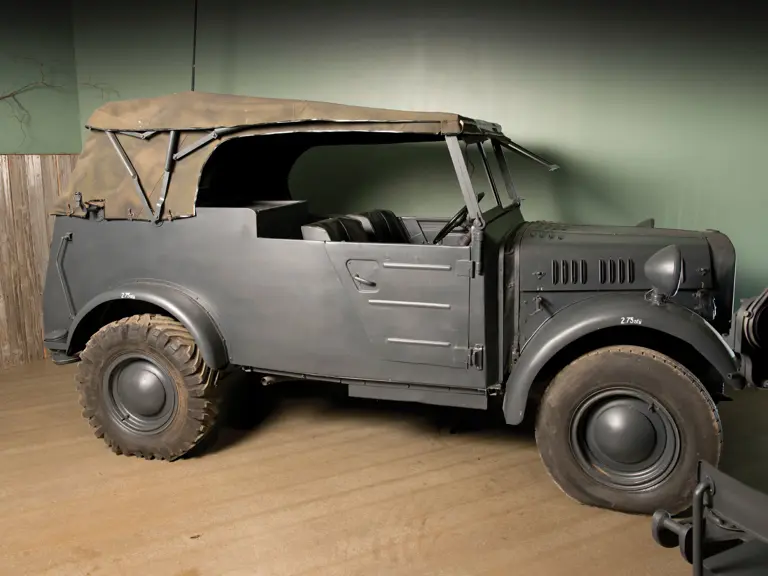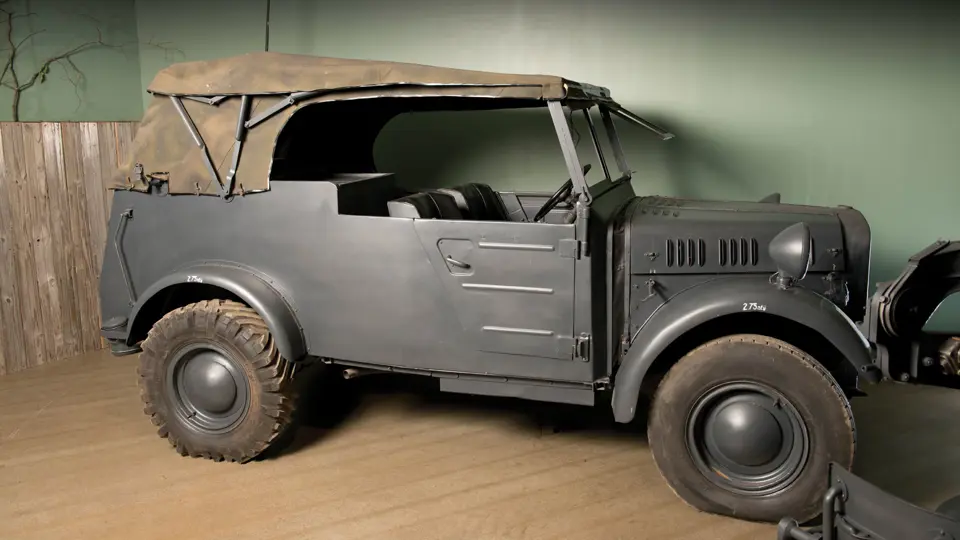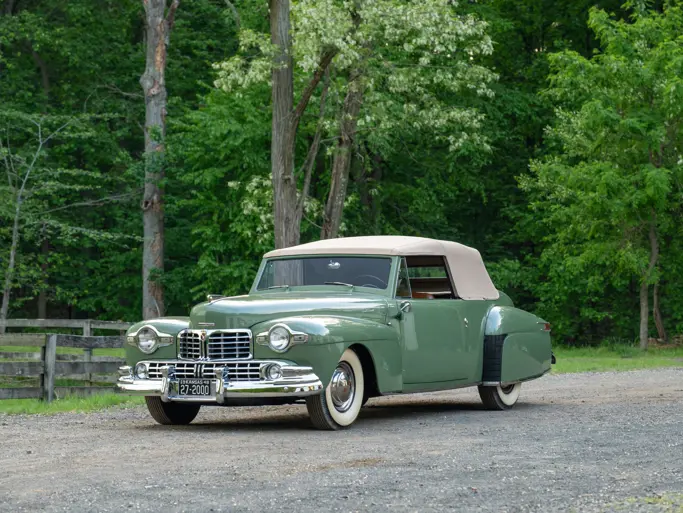Please Note: Information regarding these museum display vehicles was provided by the National Military History Center and has not been independently verified by Auctions America by RM ("AA"). As such, AA does not verify, warrant or guarantee any of this information. Prior inspection and research by the buyer is highly encouraged and recommended.
ATTENTION: Buyers are responsible for securing transportation and moving/loading of lots. Lot may be left on display indefinitely in the museum free of charge with a signed loan agreement form. Lots are sold as is, where is.
Please note this is being sold on "Bill of Sale" only.
Manufacturer: Stoewer-Werke AG, Stettin-Neutorney, Germany
Production Year: 1940
Engine: Stoewer AW2 ohv, 2.0-liter, 50-hp, water-cooled, four-cylinder, gasoline
Transmission: Four-speed: four forward, one reverse
Length: 13-feet,
Width: 5-feet, 7-1/2-inches
Height: 6-feet, 4-inches
Weight: Approximately 1.75-tons
Armor: None
Armament: NONE on this example - Could be fitted with a 7.92-mm MG34 or MG42 machine gun in addition to the radio
Maximum Road Speed: Approximately 50-mph
Crew: Three
Markings: German 62nd Infantry Division, Signals Company
The Stoewer type 40 4x4 Kfz 2 light signals (radio) car entered service in 1940. The radio set, typically a model b1 portable radio transmitter (None with this example), was positioned in the right rear passenger area. The radio operator sat in the left rear seat. Fittings were provided that enabled the antennae to either be mounted on the left rear fender if the canvas top was raised or on top of the radio unit if the top was down. Stoewer Kfz 2 radio cars differed from the standard Stoewer 40 personnel cars due to the elimination of the right rear passenger door. Extensive use of radio communication was an integral part of the tactical doctrine implemented during the late 1930s by German military planners. Precise coordination between multiple combat formations resulted in a stunning series of victories for the German Wehrmacht (military) in the first years of World War II. Radio communication between German Infantry, Panzer, Artillery and Air Force units made the difference in battles that often involved enemy forces that were considerably larger than the attacking German force. Later in the war, the Allies (especially the US Army) also became very proficient in the use of closely coordinated combined arms through radio communication based on the German model.



 | Auburn, Indiana
| Auburn, Indiana


